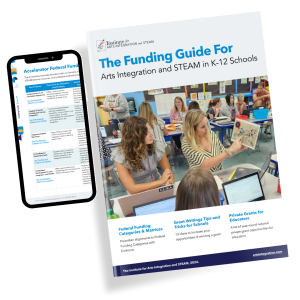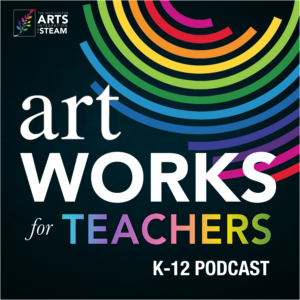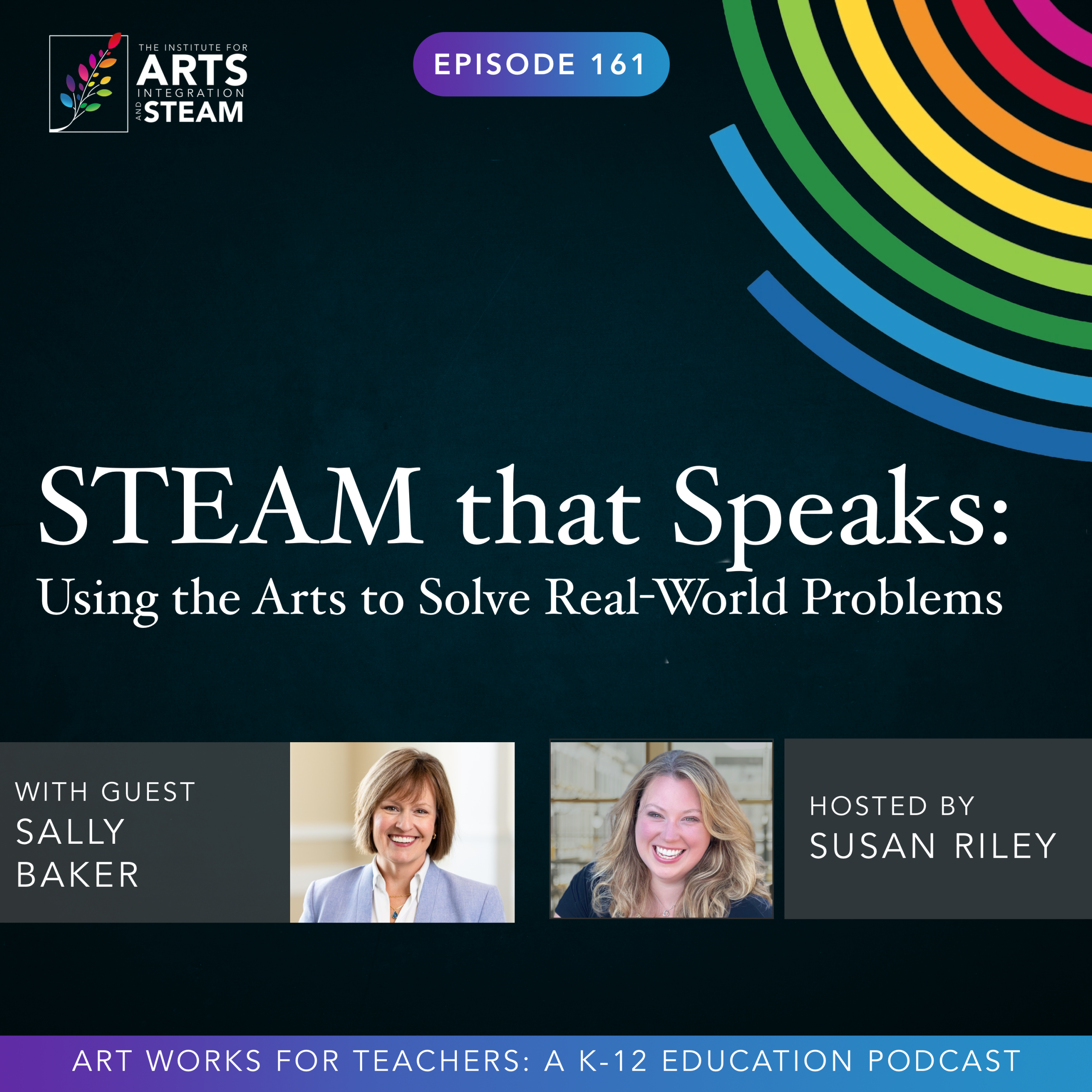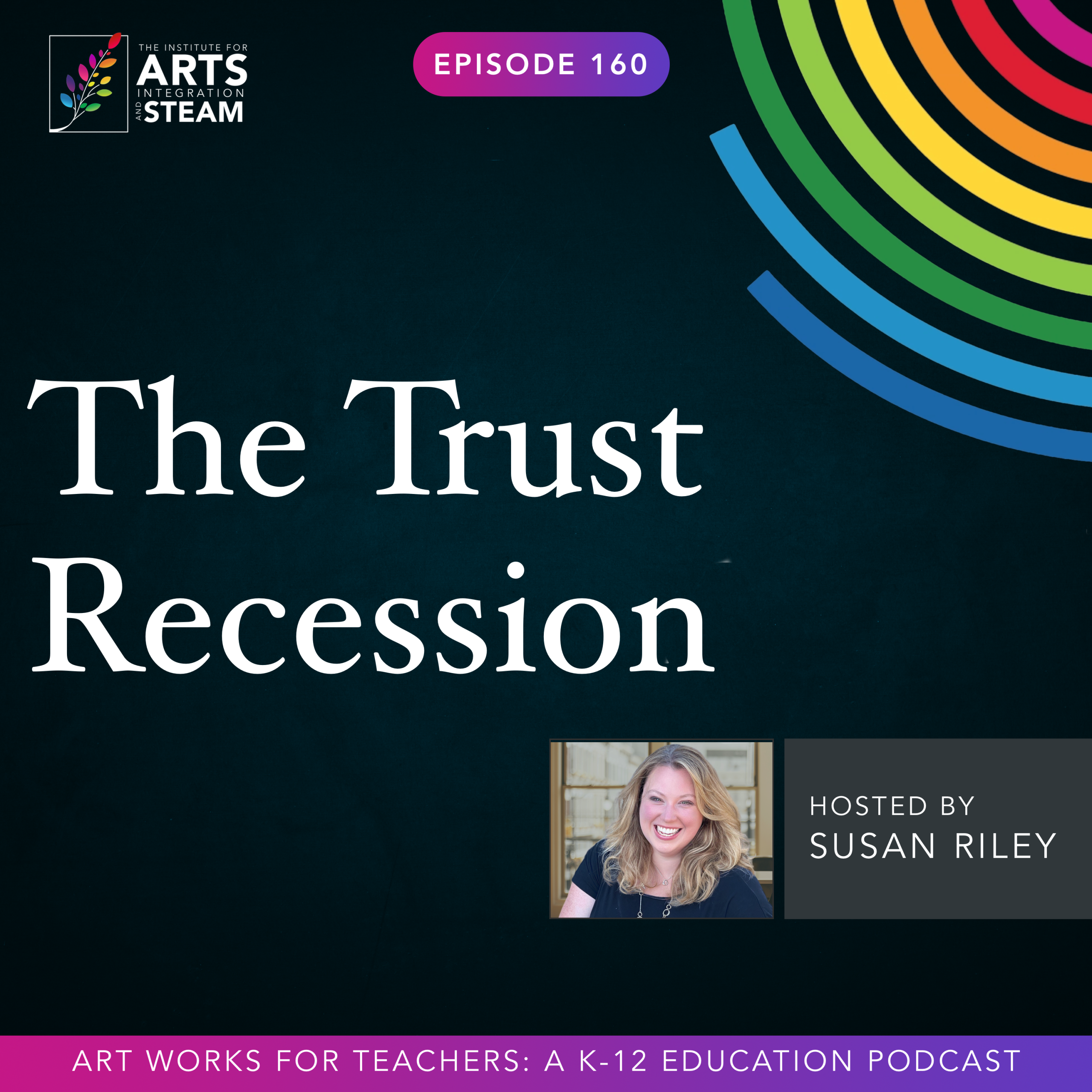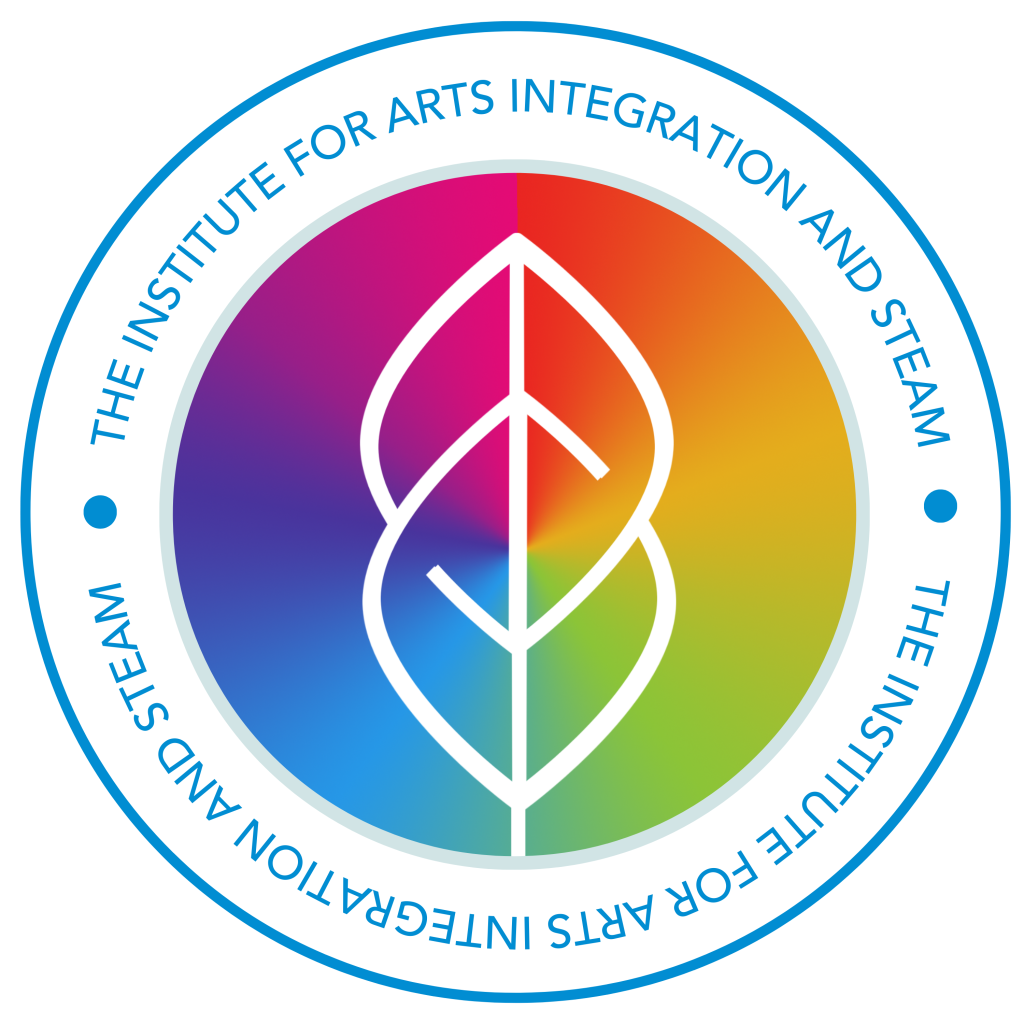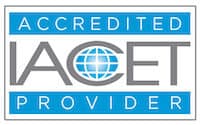ART WORKS FOR TEACHERS PODCAST | EPISODE 142 | 21:49 MIN
Now What? Funding for When Funding Disappears
With major funding shifts underway, many educators are asking, "What now?" In this vital episode, Susan shares practical, creative ways to move forward… without panic. Discover where funding still exists and how to build lasting support through partnerships and purpose-driven strategy.
Enjoy this free download of the Funding Resource.
Hello, friend, and welcome back to another episode of Art Works for Teachers. I'm your host, Susan Riley. And today's episode is going to be a little bit of a shorty episode. It's not as typically as long as our other ones. But I think it's almost more important than most of the things we've been talking about lately. Because as many of you know, in 2025, when we're recording this, about mid-year, funding sources for many schools, organizations, and arts organizations in particular, has been, let's just say decimated. They've been cut significantly. And a lot of places, schools, arts organizations, everybody is asking, what now? What do do now? Right? And so today's episode is going to focus on the practical elements of what we need to do now, what funding exists, how to get it, and making sure that the things that we have built don't crumble simply because we don't have the infrastructure to support them. So let's back up a little bit and talk about what has happened in the last 18 months that have led us to where we are now. So prior to this, we had a bunch of ESSER funding, which if we break that down, it's really COVID relief money that when we went through COVID back in 2020, Congress let us let loose a bunch of money to schools over the three year period where schools could use it to invest in their infrastructure and their HVAC system is making sure that, you know, we're not blowing asbestos through the school anymore, that we get that stuff cleaned up, as well as for technology initiatives, because everybody was home. So we needed a way for students who didn't have technology at home, who didn't have broadband, who didn't have a lot of other things that tech can support, to get that in their hands so that we can build supports for students who cannot come to school and of course, for instruction materials. And so this was a lot of money. It was a significant amount of money. And the last of it had to be designated and used by the end of 2024. So here we are in 2025. COVID relief money is now gone, right? Some schools and districts use that to hire people. And so now we're seeing some locations who said, we can't keep those positions anymore because we don't have access to those funds anymore. So now we're starting to see teacher layoffs happening and we're starting to see people being reorganized from positions in central office back into the classroom, vice versa. There's a lot of craziness going on there, right? Because we no longer have some of those funds. And in addition to that, with the turnover of our politics in the here in the US. I know we have many international listeners, but here in the US when our politics turnover every four years, and even if the same guy stays in office or the same girl stays in office, it's still there's still turmoil and turnover every four years or so. And so in this latest round, we are looking at the US Department of Ed being shuttered, or at least being cut down significantly. We've seen a lot of federal funding cuts already, grants that have been pulled back that were initially issued, cuts to the National Endowment of the Arts, cuts to a lot of different things. so grants even that had been distributed are now kind of up in the air in jeopardy. We don't know where they are. Some of them have been fully pulled back and you don't have the money access to money anymore. Some of them are sitting in limbo and we're wondering, am I going to be able to still pull from this? I know a lot of school leaders who have access to some of those grants who are like, we gotta spend it now before it again gets yanked. So we have that on top of the loss of the COVID events. And so what we're seeing is a lot of money just kind of quickly disappearing in the ecosystem of education. And it has a lot of people panicking.
And it has a lot of people doing crazy things because they're panicking. And what's interesting to me is that this is actually kind of a flip of what happens when you get a bunch of money thrown at you all at once in the education ecosystem. Because people get crazy then too. They start to panic then too. At the beginning when all of that COVID money came, all at once, it was such a significant amount of money many places were like, oh, they just kind of went on a spending spree like, oh, let's get all the things. Let's get all the things. And some places went, um, I'm not sure about this. I'm going to hold on to it. I'm going to sit on it for a while. I might sit on it for a year, maybe two and see what happens at the end of year three. then, you know, year three, then it's like, just spend it however you want. There's not strategy behind it when you get a lot of money. The same is true when you lose a lot of money.
And if we think about this in our personal lives, I think a lot of us can resonate with this. I myself have never had a ton of money thrown my way. So I can only imagine what would happen with that. I would like to think I would steward it well, but you know, but still, you know, I have had lots of money leave, right? And so I think we all know what that feeling feels like. It's this panic of, no. And then then you have some very real emotions that come up, right? So people will just as a natural consequence, either sit on the money that they have available and not spend any more. Or again, they kind of go on a spending spree and they go, we're going to spend what we've got now because who knows if we have it later. But very few actually sit down and come up with a system of here's what we have. Here's where our gaps are.
Here's what we need. How are we going to get from here to there? And let's create a system in place. Let's create a set of strategies that we can start to use. Let's take a look at looking at this with purpose. And what happens, I find, is that there is an opportunity when funding disappears to get creative with what's left. Not only do you get creative with what's left, but you get creative at how to generate more.
Because remember, money's just energy, right? It is just literally. And so it is just a value proposition from one to another and an exchange. And so when we're looking at our funding sources, we have to look at what do we value and where do we want to place the priorities in terms of our value sets. And in order to do that, we need to make sure that we have evidence and research and things that can help us to tell a story around the value behind our work. Okay? And that's where we're going today. all of that said, funding itself, when we're looking at a time period where there is a lack of funds, I can tell you I've been in education long enough. I remember the last time that there was a huge loss of funding was back in 2008.
And schools did a lot of things, again, similar to what we're seeing now with panic, right? Schools sat on money that they shouldn't have been sitting on. They should have really spent it, but spent it with a purpose instead of just holding it into the coffers. Lots of schools did either layoffs or they did work days without pay or they made you take mandatory time off without pay. And so in order to keep staff. So there was this staffing issues that we're starting to see again. And schools also started to get a little creative in where they went to find their funding. And we're starting to see some of that come back. So it's easy when the government is just throwing money at us, right? And they're sending us grants and funding that just we kind of take for granted. But when that funding goes away, we need to start looking at what else is in our community that we can start to go after. And I'm here to tell you there's a lot. And so there are community partnerships, there are community organizations that are looking to spend money. I'll give you one example. We actually had an organization call us. They wanted to bring STEAM to their local school systems, the three surrounding school systems. They were an arts council. They had over $500,000 worth funding that they were willing to give to these school systems. But they didn't know how to reach out to the school system. School systems had never reached out to partner with them. They wanted to use it for STEAM. They didn't know if the school system would be amenable to that. And so because the school system had never reached out to them and they didn't have a way to contact the school system, here's a $500,000 grant for three local school systems that is sitting there ripe for the taking and nobody is getting it. It could still be sitting in that pot right now, I don't know. Because schools had not yet worked out how do we have community outreach programs? How do we connect with the organizations in our community and know how much funding they have access to? How much philanthropy dollars that they have access to that they could support us with?
If you don't have a community outreach person or if you aren't thinking about that, then you are gonna miss out on some major dollars that can help your school. So those things are out there. And when we get into a time of what happens next with our funding, we need to be starting to look close to home first. What's in our community, who wants to help? It doesn't always just have to be about the money. It can also be an in-kind donation. It can be that kind of support. We've talked about this a lot before.
But what I'm telling you now is that now is the time to leverage it. And it is also about relationships and partnerships. You can't just go out and say, we don't have any more money anymore. Can you please give us some? Right? It sounds very, you know, please, sir, can I have some more? We don't, we want to be focused on relationships and fostering those relationships and building them for when the money does dry up. Because here's the other truth about funding that we know is going to be lost. It doesn't turn off like that rarely. Sometimes it does, but very rarely. Most school districts at this point have at least a year, at least one year until that the faucet really starts to run dry on the funding that they had been counting on. So you have a year to build relationships and not just for the money, right? It has to be a real true relationship with people where you as a school system care about the ecosystem of your community and want to work with them to develop programming and supports to ensure that the students who are leaving our buildings are becoming supportive members of the community in which they live, right? So building those relationships long-term will yield so many surprises when that easy money, if we should, if we'll call it that, if that turns off.
Something else to take a look at now, start taking a look at research grants, my friends. There are so many research grants out there and they are not insignificant. Many of them start at $100,000 and go above. And they would love to partner with schools and schools sometimes get squirrely, right? Particularly when it comes around testing data and standardized data. We have COPA rules that we have to follow.
For privacy, sure. But I also know that sometimes school districts get a little nervous about that because what if the data doesn't improve? And you don't want something, a research report out there saying that you didn't improve, right? And so it becomes a PR move. But I'm telling you, if you can open yourself to a research grant that is in line with the things you value with your purpose and what you've decided as a school as a team whatever you if you're if you're one individual teacher who's working in a small teacher team to get a grant or if you're a Superintendent of a school system. What is your value? What are you trying to do to move the needle forward with your students, right? Get some research behind it partner with an organization that's willing to provide you with a monetary grant in order to support using those things in your classroom. It becomes a really beautiful synergy when you do that. And so I would start taking a look at research grants right now. Additionally, state level block grants. The thing about the funding turning off is that it's only turning off from one location. It's turning off from the federal location, right? And instead, the intent is that it's going to be moving to the states, and many states are actually moving it directly to the school systems. And so what
And what happens is that there will be block grants, large grants for specific things like instruction materials or professional development. And so keep an eye on what block grants are starting to be created at your state level and monitor those. Okay. So that you know, okay, well this funding source left, but now it's being replaced in my state by this one. It's not a guarantee that that it will always happen, but to keep an eye on it is really helpful.
Now, all of this said, when we've talked about looking for private grants and partnerships, research grants, state-level block grants, community partners, all of that can be found in our funding guide that we will link to in the show notes. And we even give you some examples of private grants to and research grants to apply to, as well as even how to write and structure your grant application. It's pretty comprehensive. But…
One thing that we don't go into in that guide that I really want to make sure that you are aware of is how to communicate the value of what you're doing. We've talked about connecting it to your values, right? So if your value proposition is, believe that arts integration can improve student achievement by up to 20 % in one year, which is true because that's what the research tells us, right? If that's our value proposition, then
I can then justify going after a research grant for $100,000 that will prove that when we use arts integration strategically in the classroom with these students that we will see academic outcomes improve, right? So I can apply for a research grant with that. I can apply to a private philanthropy organization with that. I can partner with our local arts organizations and councils to support that.
Because that is my value proposition, right? Your value proposition might be something different. It might be centered around project-based learning. It might be centered around whole child learning. There are a thousand different things that you could look at, right? You could even just focus on improving reading scores. And then think about what are the different avenues that we can take to do that? And what is our priority for that? So if our priority is increasing reading scores,
Let's take a look at what is what's the research, what evidence is out there that shows us what improves reading scores? Well, arts integration is certainly one thing. Also the science of reading. So we should maybe invest in some more science of reading training and some supports for science and reading, science of reading in our classrooms and instructional materials. So again, you have to have that value driven purpose so that you know what to apply for and how to apply for it. But you also have to have an idea of the value of what value in terms of what the outcome is. So you have to be able to show evidence that what you're doing is working or that what you've done so far has not worked and therefore you want to pivot. You have to use evidence because in 2025 and beyond, it's not enough to have a good pitch.
And you know this, right? You know this from just scrolling your Facebook ads or your Instagram feed or your TikToks, right? Or even just watching TV with ads on it. You know this, a good pitch isn't going to sway anybody anymore. Now we have to be able to trust you. We have to see evidence. We have to know this works. What's the first thing that you do when you're concerned about buying a new product? You go look for product reviews, you look for evidence, right? And the same is true when we're going after money and we need to have funding to support our initiatives. And so if that's the case, we need to be looking for both evidence that proves that what we want to do does work and evidence that shows what we've been trying has not, and this is why we want to pivot. And in order to do that, you need to be able to tell a story. You need to be able to craft a narrative that explains those two sides well and builds trust with the person that's reading your grant application or the person that you are speaking to in order to get that funding. And so I'm kind of, again, this is a shorty episode. I'm kind of giving you the overview here, but you could dive deeply into just the idea of getting evidence provided you can provide evidence that shows that what you're looking for is actually going to move the needle. You will make a difference. You will secure the funding that you're looking for. So I hope that this was helpful for you today. We will include that funding guide in our resource link. And my message to you is don't panic. Don't panic. Don't panic. Get creative. There are many options out there and available for you. You just have to actually think about where they are now and take the action to go. it. I know it's a little bit more work, but it's so worth it. Alright, thanks so much for joining me today and I'll see you next week for another episode of Art Works for Teachers.

